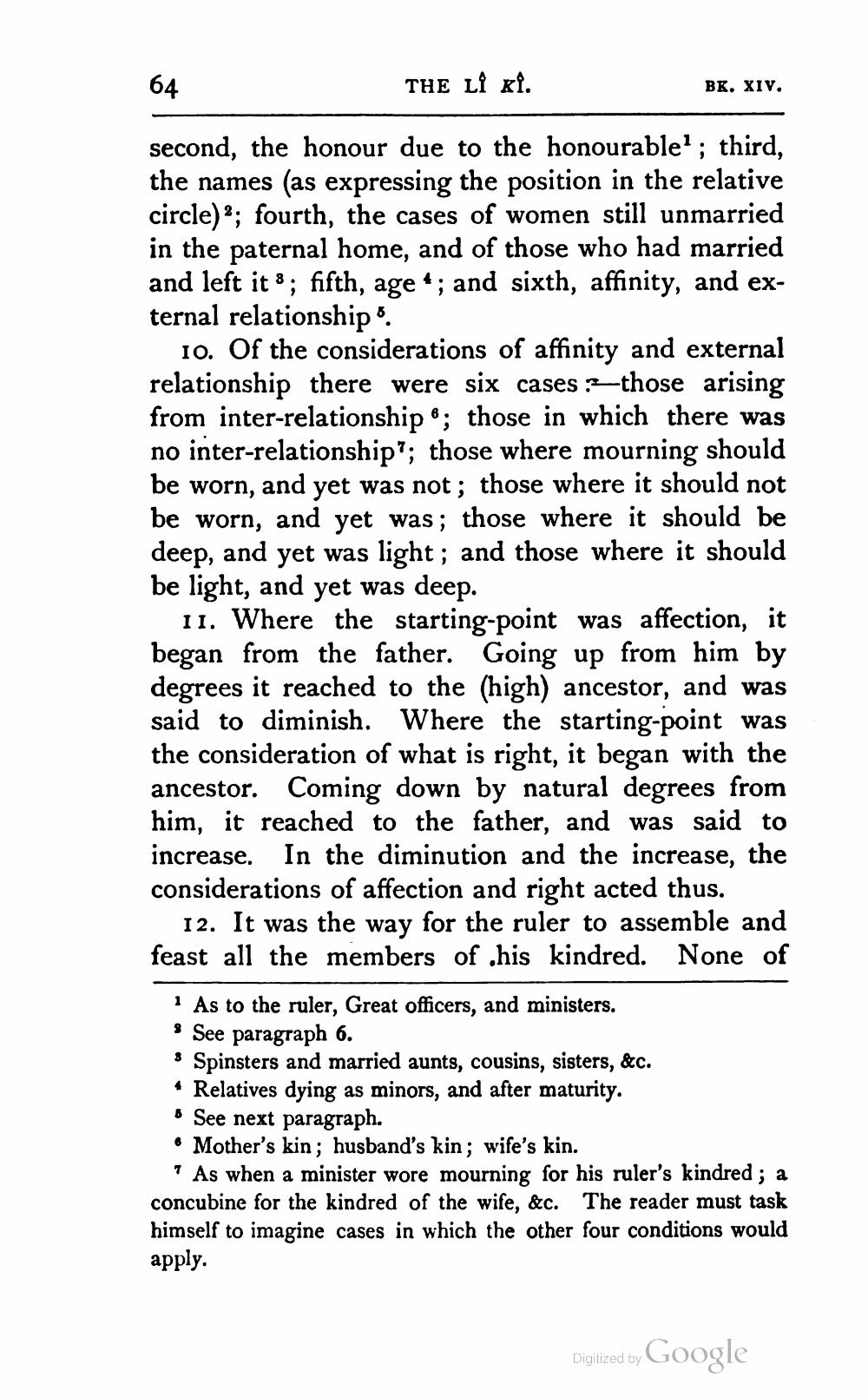________________
64
THE LÎ ki.
BK. XIV.
second, the honour due to the honourable?; third, the names (as expressing the position in the relative circle); fourth, the cases of women still unmarried in the paternal home, and of those who had married and left it 8 ; fifth, age 4; and sixth, affinity, and external relationship.
10. Of the considerations of affinity and external relationship there were six cases those arising from inter-relationship ®; those in which there was no inter-relationship’; those where mourning should be worn, and yet was not; those where it should not be worn, and yet was; those where it should be deep, and yet was light; and those where it should be light, and yet was deep.
11. Where the starting-point was affection, it began from the father. Going up from him by degrees it reached to the (high) ancestor, and was said to diminish. Where the starting point was the consideration of what is right, it began with the ancestor. Coming down by natural degrees from him, it reached to the father, and was said to increase. In the diminution and the increase, the considerations of affection and right acted thus.
12. It was the way for the ruler to assemble and feast all the members of his kindred. None of
* As to the ruler, Great officers, and ministers. * See paragraph 6. s Spinsters and married aunts, cousins, sisters, &c. • Relatives dying as minors, and after maturity.
See next paragraph. • Mother's kin; husband's kin; wife's kin. "As when a minister wore mourning for his ruler's kindred; a concubine for the kindred of the wife, &c. The reader must task himself to imagine cases in which the other four conditions would apply.
Digitized by Google




